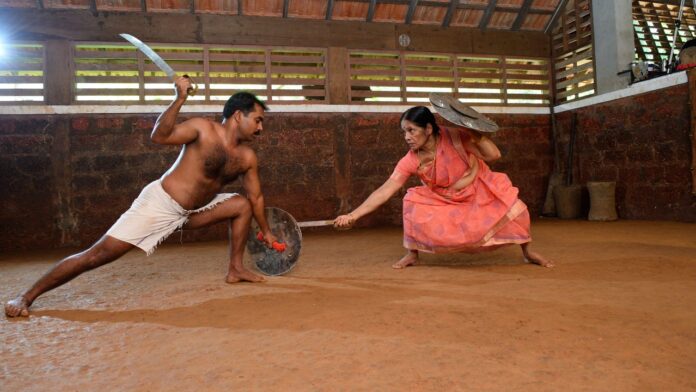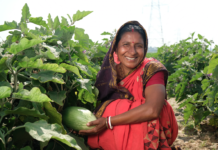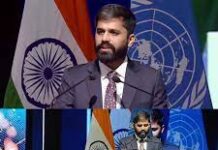Kalaripayattu or Kalari is popularly known as the ‘mother of martial arts’ for specific reasons. The term ‘Kalari’ refers to the martial art and the arena where it is taught and practiced, while ‘payattu’ means combat or practice. The tradition was mainly alive and practiced in regions of present-day Kerala, Karnataka, and Tamil Nadu. The martial arts underwent a phase of decline as an aftermath of British rule, during which it was banned from being practiced. It was however kept alive to the best, away from the state’s gaze, by the self-reliant Indian ‘Guru-Shishya parampara’. India is now fortunate to witness the revival of the art form. The practice of Kalari seamlessly falls into the web of practices associated with Yoga and Ayurveda. Hence, the nourishment of one tradition would automatically feed the rejuvenation of the other.
By Rohith Krishna
This interview by Rohith Krishna with Dr. Arun Surendran, Director, Agasthyam International, a Kalari establishment in Thiruvananthapuram, Kerala, clarifies some of the basic aspects of Kalaripayattu. Agasthyam Kalari is the brainchild of Mahesh Gurukkal, who is a fifth-generation martial artist. Agasthyam Kalari was one of the partners in organising India’s first National Martial Arts Mela in 2022. The event was a part of the Dhara scheme under the Ministry of Culture, and was organised with the support of the Ministry of Education’s IKS Division of the All-India Council for Technical Education (AICTE).
Q) We have a variety of martial arts that are popular around us, from Karate to Kung Fu to MMA (Mixed Martial Arts). Perhaps, they are more accessible to the general public than Indian martial arts like Kalaripayattu. What is special or unique about Kalari, besides the fact that it is one of the most ancient martial arts and was born in India?
Dr. Arun: It has been acknowledged by Mas Oyama, the legendary Karate exponent, in his book titled “This is Karate” that Kalaripayattu is indeed the mother of all martial arts. Kempo Karate, Shaolin Kungfu, etc., can be traced back to Bodhidharma’s works in China from the 4th and 5th centuries. But besides the antiquity and indigenous origin, Kalaripayattu can be seen as a core training or education system for the body and the mind. Kalaripayattu aims to transform the individual into an enlightened warrior. It is not only about the flexibility and agility of the body, it is also about the balance of mind and body. Beyond weapons training, Kalaripayattu imparts fearlessness and calmness. There is enhanced focus and clarity that come with the training. Thus, Kalaripayattu can be a lifestyle choice for healthy, stress-free social living.
Dr. Brian Moore of Charles Sturt University has categorically shown the power of martial arts training in significantly improving resilience in youngsters. We are currently researching the effects of Kalari training on resilience at the Indian Knowledge Systems Center for Kalaripayattu, located at Trinity College of Engineering in Thiruvananthapuram, in collaboration with Agasthyam Kalari.
Q) Is Kalari meant for masses of all ages? Common people prefer practices like yoga, exercise or gym for maintaining their body and mind. Many adults believe it is ‘too late’ for them to begin learning any martial arts, let alone Kalari. This is generally because of ageing issues and lack of time. So even if we make martial arts like Kalari accessible, how would we break this misconception? Is getting trained in Kalari tougher than practicing yoga or hitting the gym?
Dr. Arun: At Agasthyam Kalari, Dr. S Mahesh Gurukkal, developed Kalaripayattu-based fitness programmes for all ages. So in my home, my nephew, who is 11 years old, learns ‘Nithyakalari’ or regular daily training. I undergo the ‘Nalludal’ program meant for those who are 30 and above. My mother, in her mid-60s, participates in ‘Prana’, a programme meant for retired people, and for them, core exercises are not easily possible. So, today it is never “too late” to pick up a Kalari-based fitness programme that suits us. With online classes at convenient timings, the “lack of time” excuse is also invalid. We have seen that the best way to break misconceptions is to allow people to take a trial. We run trial classes, which quickly convince people about the benefits of Kalari. Quite frequently, parents join soon after they bring their children. So initially, they believe it is only for their kids, but quickly realise that they too can try and adopt a Kalari lifestyle.
We can look at Kalari as dynamic yoga. The principles of breathing and balancing are quite similar to yoga. But Kalari goes one step ahead in self-defence and martial arts training, which excites people. In Kalaripayattu, the body and mind are the only equipment. That is the fundamental difference with gym training. Also, while muscle building in the gym involves muscle stressing and contraction, Kalari is about stretching and energising.
Q) Even though we have ambassadors for Kalari, like Vidyut Jamwal, who is a well-known celebrity, the popularity for Kalari is comparatively less, even lesser than other martial arts among Indians. What can we do to actively promote the same?
Kalaripayattu has been included in Khelo India since 2021. We hope it will soon be included at the International level meets. The National Championships in Kalaripayattu now attract over 200 Kalaris nationwide. With district and state championships, parents and students now recognise it as a proper sport to participate, enhancing its popularity.
Our Indian Knowledge Systems (IKS) Center has been one among the first 13 awarded by the Ministry of Education. Our mandate is to promote the education of Kalaripayattu and improve the dissemination of information. We conducted the first National Martial Arts Mela in October 2022, which brought together our country’s indigenous martial arts traditions, including Kalaripayattu. Our IKS Center and Agasthyam Kalari have been conducting classes and self-defence programmes in different parts of the country and abroad.
Q) How did the Kalari tradition decline, even in its areas of popularity, like Kerala, Karnataka, and Tamil Nadu?
Kalari was part of the educational practice in the South when the Portuguese arrived. There are records of them curiously noting that boys and girls aged 6 or 7 were sent to Kalaris. All the religions and communities operated Kalaris. So this basic body and mind training was the foundation of education. Legendary “Vadakkan” and “Thekkan” paattukal or ballads celebrate the valour of Kalari exponents, who wore the flexible sword, urumi as a waist belt. It must also be noted that the famed Raja Raja Chola attacked Kanthaloor Salai, the ancient university in Thiruvananthapuram, twice in 998 AD and 1008AD. The centre was famous for teaching different subjects like in Nalanda along with martial arts.
Naturally, the British Raj found Kalaris, with their weapons training, to be a threat. So, they banned Kalari. In southern Kerala and Tamil Nadu, even many Christian communities kept Kalaris alive and active then. Post-independence, the revival of Kalari took place in different parts of Kerala. There was a lot of interest from foreigners to learn the root of all martial arts. Today, thanks to the work of the Kalaripayattu Federation of India, we have district, state, and national level championships. Hundreds of Kalaris operate around the country. People recognise the importance of self-defence, a balanced lifestyle and a flexible mindset. Around 700 people are training with Agasthyam and IKS Center for Kalaripayattu from around the world, online and offline.
Q) The legend traces Kalari to Lord Paraśurāma. What is the role of tradition in martial arts? Many of us today see martial arts or yoga in their commercialised forms. But Kalari has been inherited to us mainly in the form of tradition, deeply rooted in Bhakti and Adhyātma. Do you think the future of Kalari would remain the same, or would it take a different direction?
Dr. Arun: Paraśurāma is the paramaguru of the northern style or ‘Vadakkan’ style of Kalaripayattu found in northern districts of Kerala and Tulunad. Sage Agasthya Muni or Sage Agasthyar is the paramaguru of the Southern or ‘Thekkan’ style found in southern Kerala and Tamil Nadu. Ādiguru Paramaśiva is supposed to have imparted Kalari training to his wife Umayal, who taught it to her son, Muruga or Kārtikeya, who instructed Sage Agasthya. Interestingly, it is the same sage who is also the creator of Tamil language grammar. As I mentioned before, Christian and Muslim Kalaris also flourish in Kerala. Thus, this martial arts training moves beyond religious separation to instil spiritual strength in the practitioner.
The tradition imbibes deep respect for the lineage of Gurus, so the head of the Kalari is always addressed in the plural as ‘Gurukkal’, signifying everyone who walked the path before him in the service of this magnificent art. Kalari teaches respect for the elements. We touch the ground in reverence before entering the Kalari and remain grounded throughout our lives. Humility is instilled. We learn martial arts not to attack or fight, but to avoid conflict, to flow like water around obstacles whilst keeping the fire within alive to learn more, do more, and achieve more of the true human potential.
This article first appeared in www.vifindia.org and it belongs to them.








